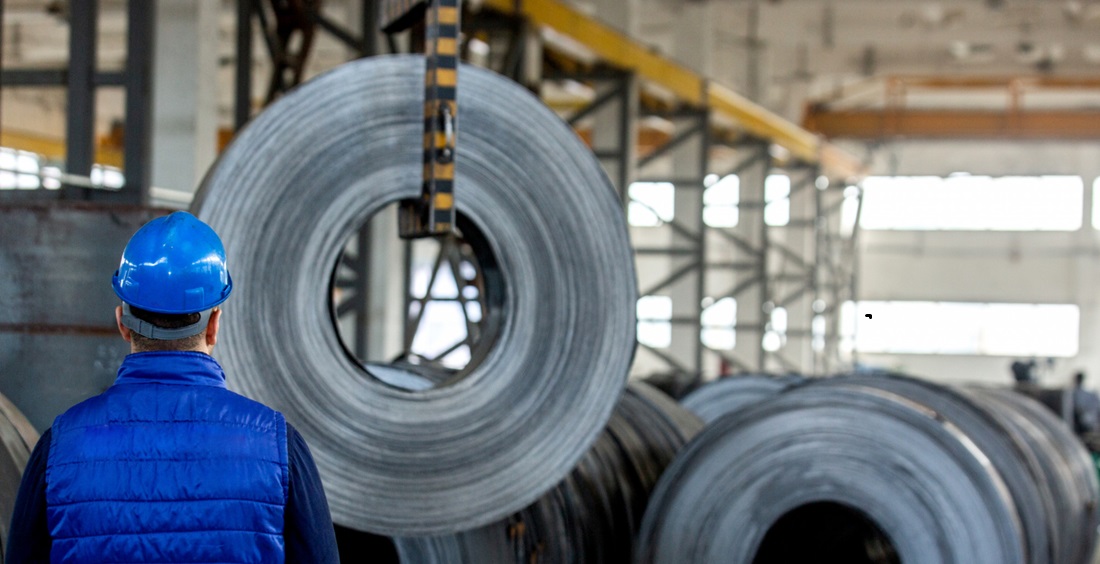
With Trump, Chinese Steel May Be Redirected to the Brazilian Market
Feb, 05, 2025 Posted by Denise VileraWeek 202506
The recent protectionist policies adopted by President Donald Trump’s administration, including imposing an additional 10% tariff on Chinese products, have raised concerns in the Brazilian steel sector. With restrictions on Chinese steel in the U.S. market, executives fear that the surplus from Asian production may be redirected to other markets, including Brazil.
The influx of Chinese steel into Latin American markets is already a concern—the industry argues that it has stalled local industrial growth and led to deindustrialization in the region. The sector further warns that an increase in this flow, driven by U.S. trade barriers, could intensify unfair competition, push prices down, and threaten the sustainability of Brazil’s steel industry.
The chart below reveals the influx of steel product imports from China into Brazilian ports between January 2021 and December 2024. The data comes from Datamar’s DataLiner.
Steel Product Imports from China | Jan 2021 – Dec 2024 | TEUs
Source: DataLiner (click here to request a demo)
President of Aço Verde Brasil, Silvia Nascimento, asserts that the U.S. tariff hikes could significantly divert Chinese steel to the Brazilian market. According to her, China is strategic and closely monitors global moves against its exports.
She points to rising investments in Vietnam, Indonesia, and other Southeast Asian countries—largely financed by Chinese capital—as a way for China to circumvent trade barriers and maintain its global market influence.
“There is a pricing issue and an export necessity. Given this, they [the Chinese] lower prices to become more competitive. How is the Brazilian government involved in these negotiations? Does it want to engage in dialogue? Does it want to discuss the decarbonization of the domestic industry? We are talking about approximately 10 million tons of Chinese steel entering the market, both directly and indirectly—one of the most polluting in the world.
How can we demand high environmental standards from the domestic industry while allowing the entry of highly polluting steel into Brazil?” she questions.
The sector accuses Beijing of “flooding” the region with cheap steel due to state subsidies and overproduction. In response to these concerns, the Brazilian government announced the implementation of import quotas and an increase in the Import Tax to 25% on volumes exceeding these quotas. This measure aimed to curb the “invasion” of Chinese steel and protect local steelmakers.
Even so, expectations are that the influx of Chinese steel into the national market will remain strong in 2025, as measures to curb imports from the Asian country have yet to yield the desired effect, according to the Instituto Aço Brasil.
Trump has also reinforced his protectionist trade policy by imposing tariffs on imports from Mexico and Canada. These tariffs are temporarily suspended, but the European Union could be the next target. In response, these countries have threatened to retaliate with additional tariffs on U.S. products.
“With the implementation of trade barriers by the U.S. and Europe’s defensive measures, it is clear that the surplus of Chinese steel is being redirected to other markets. With its excess production capacity, China is seeking new output destinations. In this geopolitical scenario, Brazil must remain vigilant,” said Frederico Ayres, president of Aperam South America, during the Forest Leaders Forum, an event organized by the Minas Gerais Forestry Industry Association (Amif) that discussed green steel production in Brazil.
China produces more steel than the rest of the world combined, given the trade barriers imposed by U.S. protectionism; André Lacerda, senior vice president of Vallourec South America, questions where this excess production will go. He argues that while Brazil has some protective mechanisms for its steel industry, they are far from effective.
“We have seen an increase in Chinese imports to Brazil. Between 2022 and 2023, the growth was over 40%, followed by an additional 20% increase between 2023 and 2024. This continuous surge has raised concerns in the market, particularly about how sustainable this growth is and its impacts on the Brazilian economy.”
Paulo Hartung, president of the Brazilian Tree Industry (Ibá), emphasizes that the tariff war disrupts global trade flows and highlights the need to improve quota and tariff systems to protect domestic industry from unfair competition.
Brazil’s largest steel manufacturer, ArcelorMittal, accounts for more than 40% of national production, equivalent to 15.5 million tons of crude steel. The company is monitoring the situation, but according to Everton Negresiolo, CEO of ArcelorMittal Aços Longos Brasil, the market outlook remains uncertain, although instability is inevitable.
From an environmental perspective, the U.S. withdrawal from the Paris Agreement is expected to reignite global debates, while COP30, to be held in Brazil, may highlight the advantages of more sustainable steel production.
The reporter traveled at the invitation of the Minas Gerais Forestry Industry Association (Amif).
Source: Valor Econômico
-
Other Cargo
Aug, 31, 2021
0
289 kg of cocaine seized at Paranaguá
-
Economy
Mar, 30, 2023
0
Brazil used Merchant Marine funds to pay debt, reveals CNT study
-
Sugar and Ethanol
May, 04, 2023
0
Traders see sugar loading delays in Brazil, prices could go higher
-
Ports and Terminals
Feb, 05, 2019
0
Governor gives the go ahead for bridge between Santos and Guarujá

